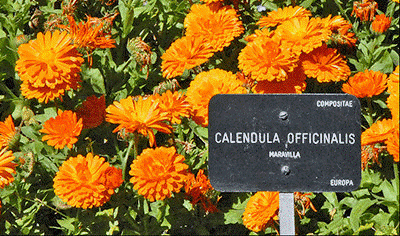
by Donna Arnold | May 22, 2025
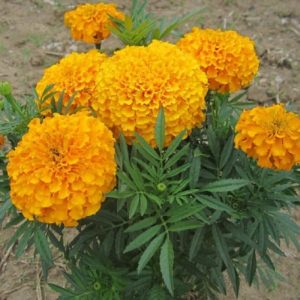
Spring and summer bring an explosion of color to gardens, and among the most resilient yet misunderstood flowers are marigolds. Growing up in a small Caribbean town, marigolds were everywhere. Locals called them “Stink and Pretty” or even “graveyard flowers” for their bold scent, but their benefits were undeniable. Whether used in traditional medicine, religious rituals, or tucked into garden beds to keep pests at bay, marigolds have always been more than just a flower.
More Than Just a Bloom
Belonging to the Tagetes genus, marigolds come in a variety of cultivars, each offering unique traits and advantages. Beyond their beauty, they play essential roles in soil conditioning, pest control, especially against nematodes, and companion planting.
A Closer Look at Marigold Varieties
Marigolds fall into distinct categories, each with different growth habits, flower forms, and benefits. The two most common types are Tagetes patula and Tagetes erecta.
- French Marigold (Tagetes patula)
Compact and bursting with warm hues of orange, yellow, and mahogany, French marigolds are excellent pest deterrents. Often planted alongside vegetables, they help manage soil nematodes while thriving in borders and containers.
- African or Perfection Yellow Marigold (Tagetes erecta)
Despite the name “African,” this species hails from Central America. Taller and more dramatic than French marigolds, it produces large, showy golden blooms ideal for cut flowers and mass plantings.
- Signet Marigold (Tagetes tenuifolia)
Delicate foliage, small dainty flowers, and an edible twist—Signet marigolds are a favorite for adding color to salads and attracting pollinators. Plus, their milder scent makes them perfect for gardeners sensitive to stronger fragrances.
A Common Mix-Up
It’s worth noting that while often called “Pot Marigold,” Calendula officinalis is not part of the Tagetes genus. Though it shares similar colors and benefits, calendula is better known for its medicinal properties and edible petals.
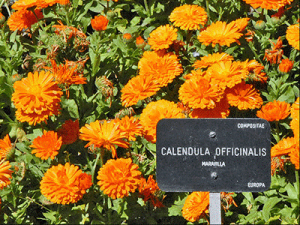
Calendula in the Royal Botanical Garden of Madrid, Spain. Photo by Jean-Pierre Dalbéra.
Next time you pass a tray of marigolds at a plant sale or see them brightening a garden bed, take a second look. These unassuming blooms do far more than add beauty—they may just be the unsung heroes of your summer garden.
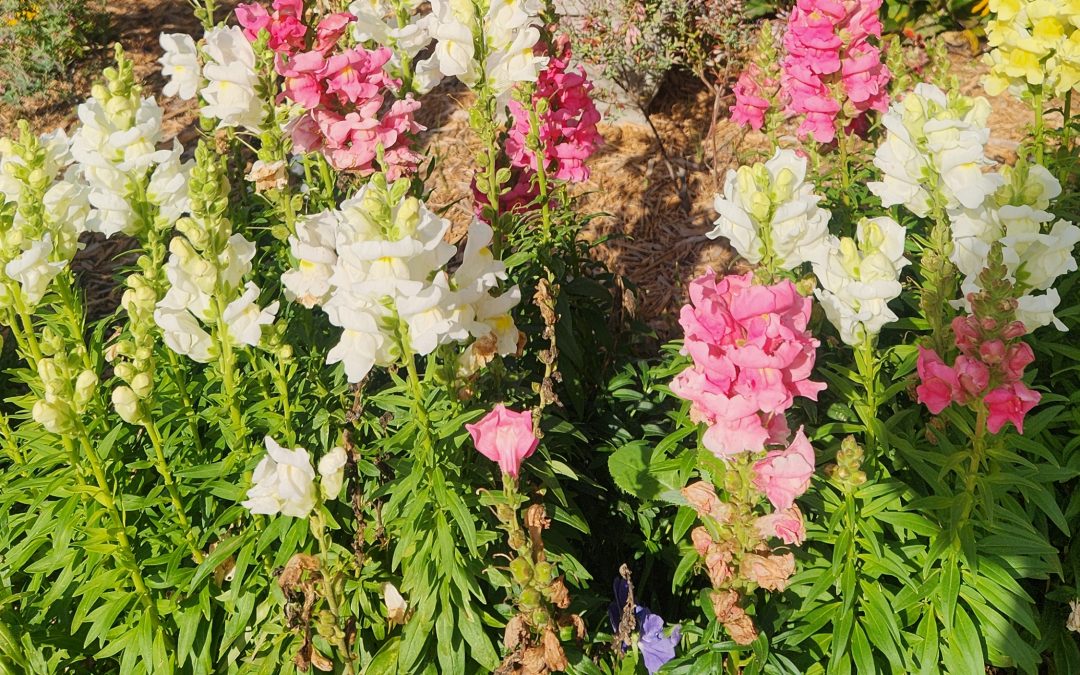
by Donna Arnold | Apr 10, 2025
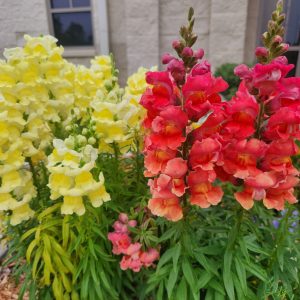
Snapdragon in bloom: Photo credit Donna Arnold FAMU Extension.
Snapdragons (Antirrhinum majus) add vibrant color to fall and winter gardens in North Florida with their wide range of hues. Colors include red, orange, yellow, and maroon. Their growth varies; tall varieties reach 2–3 feet, intermediates 1–2 feet, bedding types 6–15 inches, and rock garden hybrids about 6 inches. Dark-colored flowers often have reddish stems, while pale blooms grow on light green stems. Snapdragons’ warm-colored flowers stand out in garden beds, especially when paired with white flowers, enhancing their red, orange, and maroon tones. Their fine-textured foliage contrasts nicely with large-leaved plants and compact shrubs.
Though not native to North America, they are widely cultivated and are not considered invasive. Snapdragons are versatile and ideal for mass plantings, containers, cut flowers, and edging. They are generally available within their hardiness range, making them a popular gardener choice.
Cultivars
Dwarf: ‘Floral Carpet,’ ‘Floral Showers,’ ‘Kolibri,’ ‘Royal Carpet,’ ‘Tahiti’
Intermediate: ‘Princess,’ ‘Liberty,’ ‘Sonnet,’ ‘Pixie,’ ‘Sprite,’ ‘Cinderella’
Tall: ‘Panorama,’ ‘Burpee’s Topper,’ ‘Spring Giant,’ ‘Rocket’
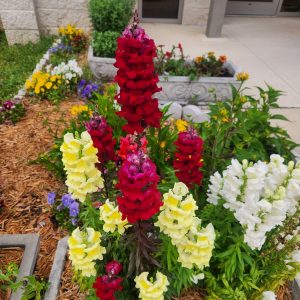
Photo credit: Donna Arnold FAMU Extension.
Care and Management
Caring for Snapdragons requires minimal work. They thrive in slightly acidic garden soil but struggle in unamended clay. Therefore, ensuring the soil remains acidic is key to their survival. They require full sun and moist soil. After the first bloom, cutting plants back to five or six nodes encourages a second flowering. Also, fertilizing at bud formation improves growth.
You can increase numbers through propagation. Propagation can be done through seeds or cuttings. Seeds germinate in 10–14 days at 70°F and should not be covered with soil. Prechilled seeds germinate best. Pinch seedlings with two to three leaf sets, except for dwarf varieties. Plant in fall for winter blooms in zones 9–11. In zone 8b and south, snapdragons may survive mild winters. Space plants 6–10 inches apart.
Pests and Diseases
Aphids: Feed on young growth, weakening plants.
Greenhouse leaf tier: Chews and webs leave; pesticides are ineffective once leaves roll.
Mites: Cause bronzed, stippled foliage, especially in hot weather.
Common Diseases
Rust: Brown pustules with yellowed leaf tissue; use proper spacing and resistant varieties.
Anthracnose: Causes sunken spots on stems and yellowing leaves; destroys infected plants.
Gray mold: Leads to wilting and stem browning; worsens in wet conditions. Remove infected stalks.
Stem rot: Cottony growth near soil line; infected plants should be removed.
Snapdragons offer rich color, versatility, and seasonal interest in gardens, making them a valuable addition for novice and experienced gardeners.
For more information contact your local extension office or click on the following links.
FPS-44/FP044: Antirrhinum majus Snapdragon
ENH1285/EP549: Planting and Propagation of Snapdragons in Florida
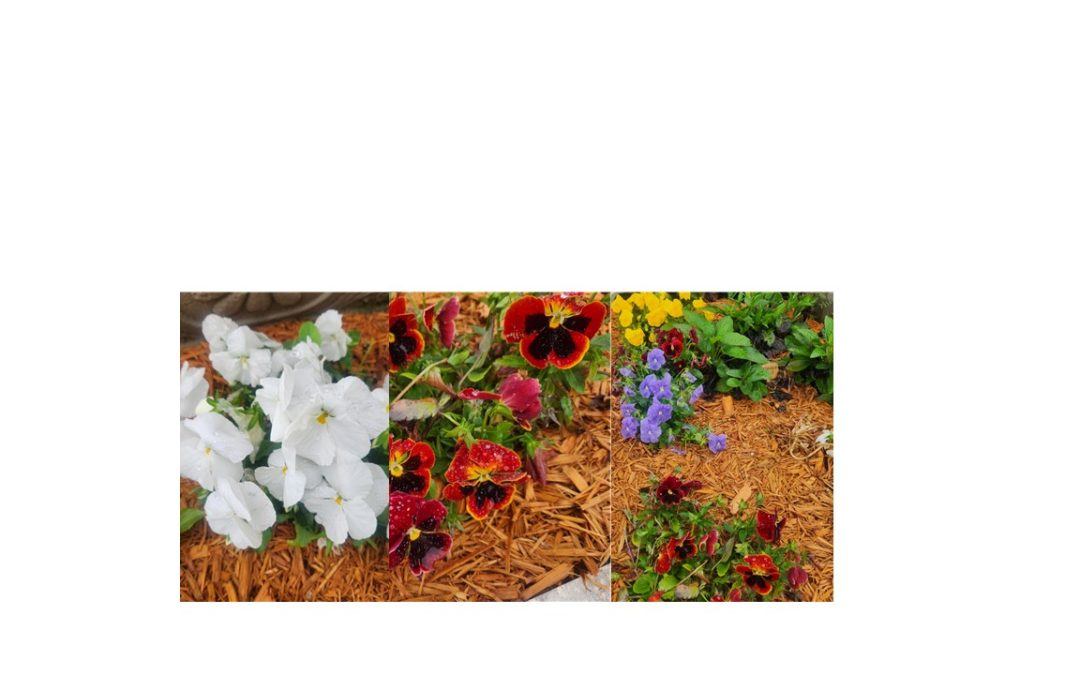
by Donna Arnold | Feb 19, 2025
 Growing pansies in North Florida is a rewarding experience, as these resilient flowers thrive in cooler temperatures. As I walked up to our front office after the ice had melted away, I was amazed to see their vibrant blooms still standing strong, displaying their cheerful faces despite the harsh conditions of the January 2025 winter storm. Their endurance is a testament to their hardiness, making them a perfect choice for winter gardens. Here’s a guide to help you successfully cultivate pansies in our region.
Growing pansies in North Florida is a rewarding experience, as these resilient flowers thrive in cooler temperatures. As I walked up to our front office after the ice had melted away, I was amazed to see their vibrant blooms still standing strong, displaying their cheerful faces despite the harsh conditions of the January 2025 winter storm. Their endurance is a testament to their hardiness, making them a perfect choice for winter gardens. Here’s a guide to help you successfully cultivate pansies in our region.
Best Planting Time
Pansies thrive in cooler weather, making fall (October–November) the ideal time to plant them. Once established, they will provide stunning blooms throughout the winter and into early spring. While they can tolerate mild frosts, Florida’s summer heat is too intense for them, so they are best treated as a seasonal flower.
Choosing the Right Variety
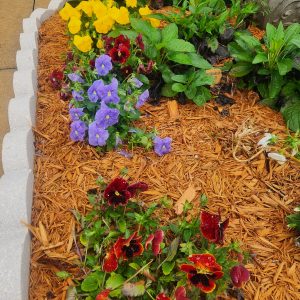 Not all pansies are well-suited for Florida’s fluctuating temperatures. To ensure a successful and long-lasting display, select heat-tolerant varieties such as Majestic Giants, Matrix, or Delta Series, which are known for their resilience and vibrant blooms.
Not all pansies are well-suited for Florida’s fluctuating temperatures. To ensure a successful and long-lasting display, select heat-tolerant varieties such as Majestic Giants, Matrix, or Delta Series, which are known for their resilience and vibrant blooms.
Delta Series – A popular choice for its bold yellow, purple, and blue flowers. This variety is highly valued for its disease resistance, vigorous growth, and ability to withstand both cold and mild heat.
Majestic Giants – A classic pansy cultivar known for its large, eye-catching blooms in a variety of colors and patterns. These compact plants thrive in both container gardens and mass plantings.
Matrix Series – This variety produces dense, bushy plants with large flowers, making it an excellent choice for creating colorful, impactful displays in both garden beds and containers.
By choosing the right variety, you can ensure your pansies thrive throughout the cooler months, bringing beauty and color to your landscape.
Sun and Soil Requirements
For the healthiest plants, provide full sun to partial shade, with at least 4–6 hours of direct sunlight each day. Pansies prefer well-draining soil rich in organic matter, with a slightly acidic to neutral pH (5.5–6.5). Improve your soil’s structure by adding compost or peat moss, which enhances both drainage and nutrient content.
Watering & Care
Maintaining proper moisture levels is key to keeping pansies healthy. Water them 2–3 times a week, ensuring the soil remains moist but not soggy. A layer of mulch will help retain moisture and reduce weed growth. To encourage continuous blooms, apply a balanced, slow-release fertilizer every few weeks and remove spent flowers (deadheading) to keep plants looking fresh and vibrant.
Common Challenges & Solutions
Despite their hardiness, pansies can face a few challenges:
Heat Sensitivity: If temperatures rise unexpectedly, pansies may wilt. Providing afternoon shade can help them cope.
Pests: Keep an eye out for aphids, slugs, and caterpillars. Use insecticidal soap or remove pests by hand to prevent damage.
Fungal Diseases: Avoid overhead watering to prevent root rot and mildew. Ensuring good air circulation will also help reduce disease risks.
Spring Transition
As spring temperatures climb, pansies will naturally begin to decline. To maintain a colorful garden, consider replacing them with heat-tolerant flowers such as zinnias, marigolds, or vincas, which can handle Florida’s warm and humid conditions.
Their cheerful, expressive blooms make them a wonderful choice for adding color and charm to your landscape. Happy planting!
For more information contact your local extension office.

by Matt Lollar | Jan 30, 2025
Planting annuals is a great way to add color and texture to the landscape. Annuals can provide an added visual component to the garden regardless of if they’re planted in the ground or in containers, or even better—both. An annual plant completes its life cycle (growing, flowering, seed set, and death) in a single growing season. Annuals can stay in good health and last longer if they are pruned back when they get leggy and by pinching off any fading flowers (deadheading). To help plan your garden beds and container plantings please click below to enlarge the image of the handy “North Florida Annual Planting Guide”. Please note the suggested planted dates in this guide are based on average monthly temperatures, but every year is different. Some years we may have a late frost around Easter, other years we won’t have a cold front after February.

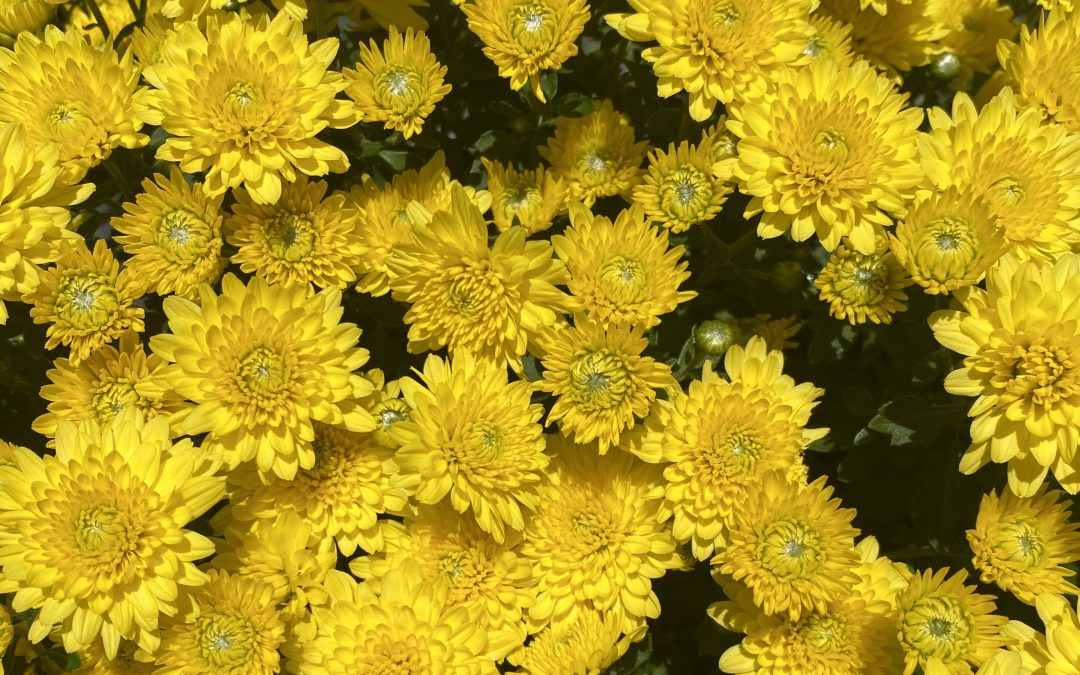
by Lauren Goldsby | Oct 17, 2024
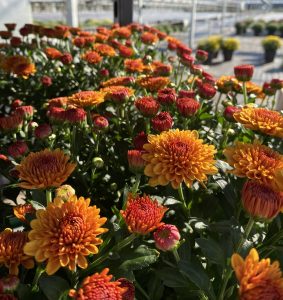
Orange chrysanthemum flowers in bloom. Photo credit: Lauren Goldsby
It feels like everywhere you turn, chrysanthemums are the star of the show right now. These hardy blooms offer a bounty of fall color to your front porch and seasonal decorations, making them a go-to favorite for sprucing up your space.
We typically see mums offered at garden centers and supermarkets this time of year, with their fall hues of yellow, burgundy, orange, and purple. But here’s the secret: as a perennial plant, mums can do so much more than just serve as a short-lived decoration. With the right care, they can become a permanent part of your landscape, blooming year after year and keeping that fall feeling alive long after the season ends.
To enjoy your mums for more than a few weeks follow these tips!
It’s ok to be picky
When shopping, look for mums with buds that have just started to open and show a hint of color. This ensures you’re choosing the color you want while also increasing the time you can enjoy the flowers at home.
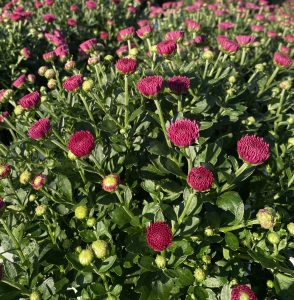
Flowers just starting to open on a chrysanthemum. Photo credit: Lauren Goldsby
Water wisely
While temperatures are cooling down, don’t let that fool you into thinking your mums don’t need regular watering. The middle of the day can still bring heat and producing flowers is energy intensive for the plant. Be sure to check the top inch of soil regularly. If it feels dry, it’s time to water! Mums in full sun may require daily watering but try to avoid getting water on the leaves—this helps prevent pathogens from spreading.
Make room for more bloom
Once flowers have bloomed and begin to fade, it’s important to remove them—this is called deadheading. By trimming away the spent blooms, you’re helping the plant conserve energy and encouraging more new buds to grow. Plus, it keeps the plant looking neat and tidy!
Don’t toss them
When it’s time to make space for poinsettias, simply move your mums to a sunny spot in the yard. Mums can be kept in their containers or planted in the ground. If you’re planting them in the ground and have sandy soil, amend with compost. In late spring, when flowering has ended, prune off the top 2 inches of growth. You can propagate mums by taking vegetative cuttings or dividing the plants.
If you love the look of mums, check out these other plants in the Asteraceae family, many of which are native to Florida. https://gardeningsolutions.ifas.ufl.edu/plants/ornamentals/asters/














